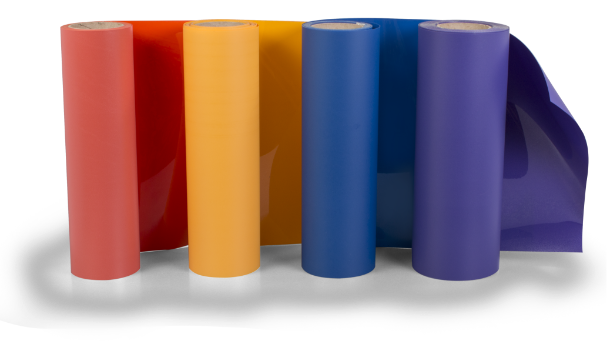Thanks to Ulrike André of Stahls’ International for sharing an article she wrote for Specialist Printing Worldwide or SPW Magazine back in April 2014. The magazine gave us permission to reprint and here is an excerpt from the article about “Finding Your Perfect Platen Match.”
What’s in a Platen?
For most people, the lower platen is the least of their worries when purchasing a press. It is always the upper platen, the one with the heating mechanisms that is the star of the show. But the bottom platen also plays a role in making heat printing more productive. When choosing a press, you should consider how the lower platen will perform for you in the long run. It is a good idea to know what the lower platen is made of. How is it attached to the base? Are there interchangeable shapes available? How easy is it to remove the lower platen? What shapes and sizes of lower platens are available? Are there any other platen accessories available that can help your investment last longer? You will be surprised how many choices there are and decisions there are to be made. It is well worth the extra research though: the right lower platen can save you a lot of time, frustration and yes, money!
Lower Platen Construction
The lower platen needs to be made of a sturdy material – robust enough to withstand high pressure without bowing or bending. If the material is too weak, your transfer might not adhere to the substrate due to unevenly distributed pressure and/or cold spots. In addition, the platen should be light enough so it can be easily handled. Aluminum is a popular raw material used to make lower platens. Steel for small platens is also an option. If you are looking for a heat press that can travel with you to shows, sporting events etc. make sure you consider what the make-up of the platen (and heat press), since it will have an effect on the overall weight. You don’t want to have to rely on an army of helpers if you don’t have to.
A simple pushpin, “quick change lever” makes changing platens on the Hotronix Air Fusion child’s play.
We have enough stress in our lives; why add cumbersome mechanisms to exchange lower platens to that list? Here are some examples of lower platen changing mechanisms available on today’s market:
Nuts and bolts. Older versions of heat presses require various tools, a second pair of hands and a lot of patience in order to exchange a lower platen. The heat press often has to be moved on its side, exposing the nuts and bolts of the lower platen. Depending on the weight and design of the heat press, two people might be necessary to make the exchange. Time, frustration and money are wasted.
The quick-change pushpin. A huge improvement over the “nuts and bolts” version, the pushpin simply has to be pulled out, releasing the lower platen. Lift the platen out of its position and remove it. The next lower platen can be inserted and slips into its designated place. Often the pushpin will snap into place, securing it.
The quick-change lever. Possibly the most convenient and easy to use, this version is precise and efficient. Simply move the lever outward, remove the lower platen, insert the new platen, move the lever back into its initial position. Done. The platen is always secure in its place, no fidgeting with tools, or wiggling room for snaps to move into the right position – just open, drop in, exchange, close.
Positioning Pay attention to whether the lower platen can only be placed into its allocated slot staying stationary in this initial position or if the mechanism allows for the platen to be turned vertically and horizontally. This could be a great advantage to you, as you can use the platen for adult textiles in the vertical position and for youth textiles when it is moved into the horizontal position.
Customizing Your Platen Never Made More $en$e! Standard platens are readily available from most heat press manufacturers. Choose from round, rectangular, square, y-shaped platen as well as cap platen – all available in various sizes. But what will you do if you find yourself being asked to heat apply onto the occasional odd-shaped object? For example: a ball, gloves, shoes, a saddle or other odd-shaped objects? Does your heat press manufacturer offer custom platens to accommodate these requests? Custom platens allow you to set yourself apart and ensure you have a huge advantage over your competitors who might have turned this very customer away!
When it comes to custom platens, if you can draw it – you can have it made. I work for a company who offers this service to their customers at very little additional cost and the feedback has been incredibly positive. In our industry, the personalization industry, we simply must think about all aspects of what it means to personalize! From head to toe, from heat press to CAD-CUT® heat transfer material, from transfers to CAD-COLOR® digital print & cut media – all the way to the function of a heat press and yes, the shape of the lower platen: ALL must be customizable.
Having a custom platen made to your specifications might not be as costly as you fear. Contact your heat press manufacturer and ask. The savings the custom platen will bring due to the easy heat application, not to mention the satisfied customer telling their friends about their experience with you will far exceed any extra cost you might encounter.
Protect Your Asset – Accessorize!
Make sure you protect your heat press’ lower platen so you can extend its life expectancy while making the heat application process smoother and more enjoyable at the same time. Here is how: A Quick Slip pad protector is usually made of Teflon® material and fits snuggly over the silicone rubber padding of your lower platen of your heat press. The Teflon® coated pad protector allows you to slide textiles quickly and smoothly over the lower platen – no aggravation, no time lost. In addition, an upper platen protector protects your upper platen, as the name implies, which usually houses the heating element, from dirt and residue to adhere to. Both protectors can be wiped down easily with a damp cloth to clean.
Ah, The Little Details!
Personalization is gaining momentum with every day that passes. We are all trying to make and leave our marks, making our voices heard. Our industry is an exciting one to be working in—there has never been a greater demand for personalization and there have never been so many heat printing options from which to choose. Making it just a little easier, a little more efficient, a little less frustrating, a little more fun and a lot more profitable by choosing the right tools.
Thank you Ulrike for sharing your article. You will soon be seeing more custom platens and heat presses available from Hotronix!






